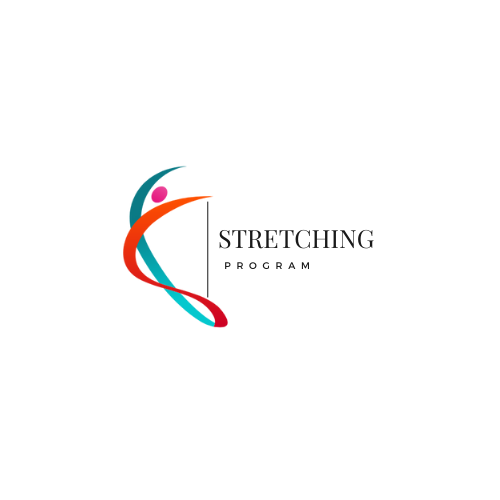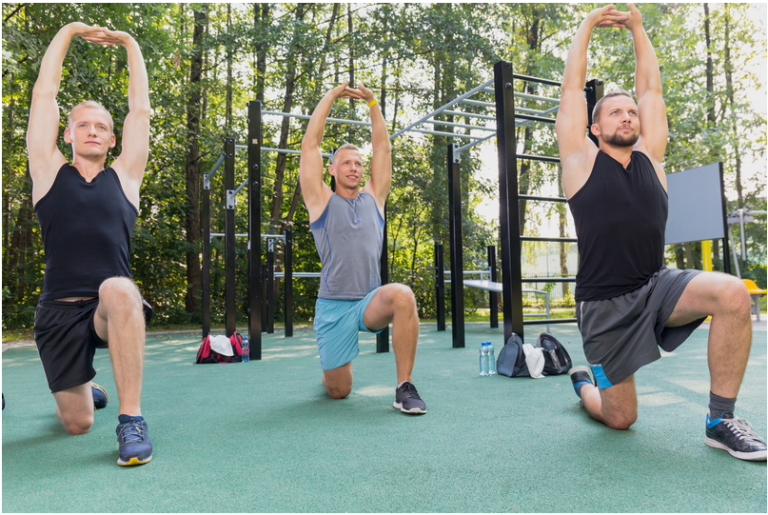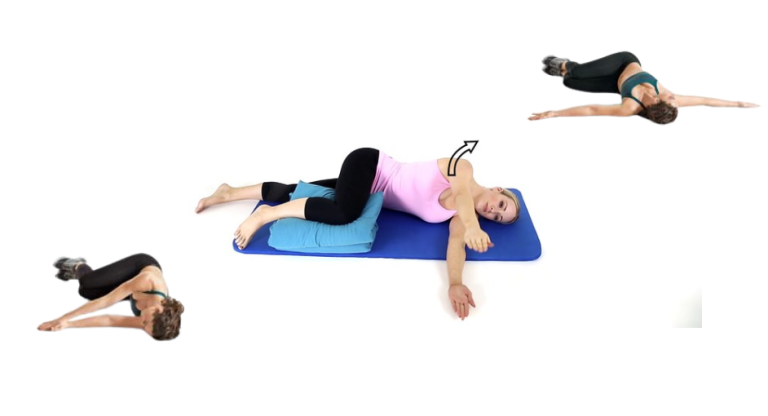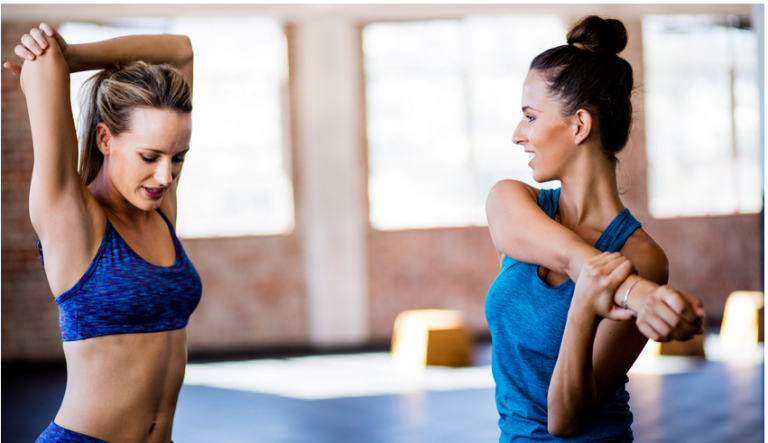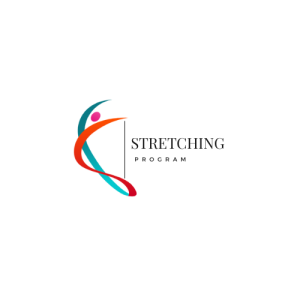
Weighted Stretching Exercises: How to Stretch Your Muscles with Weights for Maximum Hypertrophy
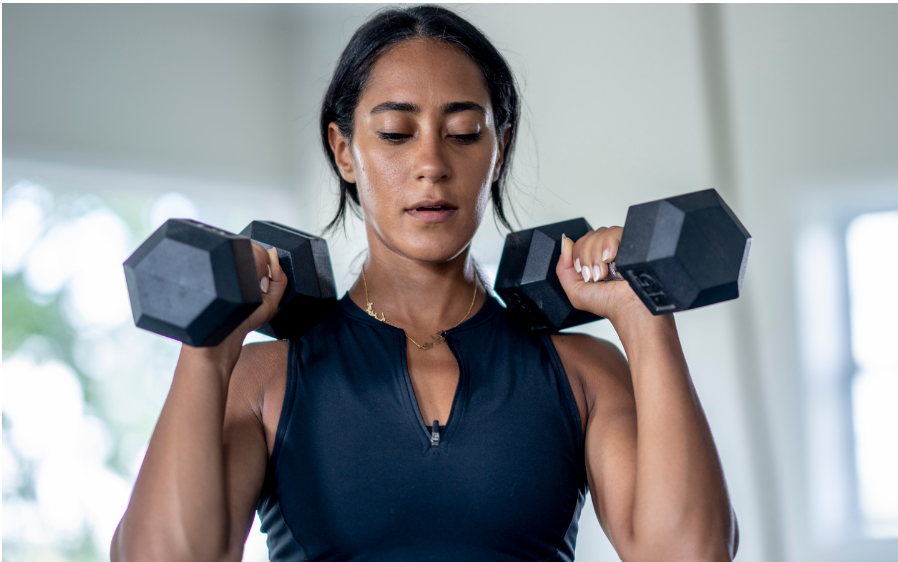
Do you want to increase your muscle size and strength? Do you want to improve your flexibility and range of motion? Do you want to enhance your blood flow and nutrient delivery to your muscles? If you answered yes to these questions, you must try weighted stretching exercises.
Weighted stretching exercises, a concept often linked to Dante Trudel’s bodybuilding philosophy, are loaded stretches where you use external resistance to stretch your muscles in a lengthened position. This creates high tension and stress on your muscle fibers, stimulating muscle growth and hypertrophy. Weighted stretching exercises also release local growth factors, such as IGF-1, which promote muscle repair and recovery, which is crucial for effectively training a muscle.
In this article, you will learn what weighted stretching exercises are, how they work, why they are effective, and how to perform them safely and correctly. You will also discover some of the best-weighted stretching exercises for different muscle groups and how to incorporate them into your training program. By the end of this article, you will be ready to stretch your muscles with weights and unleash your full potential.
Do you want to improve your flexibility and mobility with a simple tool? Learn how to use a stretching strap to perform effective exercises for your whole body.
What are Weighted Stretching Exercises?
Weighted stretching exercises are loaded stretches where you apply external resistance to your muscles while in a stretched position. This can be done with dumbbells, barbells, cables, bands, or any other form of weight. The idea is to hold the stretch position for a certain amount of time, usually between 15 to 60 seconds, and create high tension and stretch in your muscles.
Weighted stretching exercises are different from passive or static stretching, where you relax your muscles and hold a stretch without resistance. Passive stretching and static stretching are useful for improving your flexibility and mobility, but they do not create enough stimulus for muscle growth and hypertrophy. On the other hand, weighted stretching exercises are more intense and challenging, activating your muscle fibers and triggering anabolic responses.
How do Weighted Stretching Exercises Work?

Weighted stretching exercises create mechanical and metabolic stress on your muscles, leading to muscle damage and inflammation. This triggers a cascade of events that result in muscle hypertrophy and growth. Here are some of the main mechanisms behind weighted stretching exercises:
1. Mechanical Stress
When you stretch your muscles with weights, you create high mechanical stress on your muscle fibers, especially the fast-twitch fibers, which are responsible for strength and power. This causes micro-tears and damage to your muscle fibers, which stimulates the repair and regeneration. As your muscles heal, they become bigger and stronger to adapt to the stress.
2. Metabolic Stress
When you stretch your muscles with weights, you also create a high amount of metabolic stress on your muscles, which leads to the accumulation of metabolites, such as lactate, hydrogen ions, and inorganic phosphate. These metabolites interfere with the normal functioning of your muscles, causing a burning sensation and fatigue, particularly in training sessions focusing on muscle stretched beyond its comfort zone. This activates the mTOR pathway, a key muscle protein synthesis and growth regulator. Metabolic stress also increases the release of local growth factors, such as IGF-1, which stimulate muscle cell proliferation and differentiation.
3. Time Under Tension
When you stretch your muscles with weights, you also increase the time under tension of your muscles, which is the total time your muscles are contracted and under stress. Time under tension, a concept frequently highlighted by Dante Trudel in bodybuilding circles, is crucial for muscle hypertrophy and growth, as it determines the amount of stimulus and overload your muscles receive. The longer you hold the stretch position, the more time under tension you create and the more muscle growth you stimulate.
Why are Weighted Stretching Exercises Effective?

Weighted stretching exercises are effective for several reasons. Here are some of the main benefits of weighted stretching exercises:
- They Increase Muscle Hypertrophy and Growth: As explained above, weighted stretching exercises create high mechanical and metabolic stress on your muscles, stimulating muscle protein synthesis and growth. Weighted stretching exercises release local growth factors, such as IGF-1, promoting muscle repair and recovery. Weighted stretching exercises are especially effective for targeting the fast-twitch muscle fibers, which have the greatest potential for hypertrophy and growth.
- They Improve Flexibility and Range of Motion: Weighted stretching exercises also improve flexibility and range of motion, which are important for joint health and performance. Weighted stretching exercises lengthen your muscles and connective tissue, which increases your elasticity and mobility. Weighted stretching exercises also improve your neuromuscular control and coordination, which enhances your stability and balance. By improving your flexibility and range of motion, you reduce your risk of injury and improve your posture and alignment.
- They enhance blood flow and deliver Nutrients to the fascia surrounding muscles: Weighted stretching exercises also enhance blood flow and nutrient delivery to your muscles, essential for muscle health and function. Weighted stretching exercises increase blood vessel dilation and capillary density, improving oxygen and nutrient delivery to your muscles. Weighted stretching exercises also increase your blood flow restriction and hypoxic conditions, increasing your growth hormone and IGF-1 levels and further stimulating muscle growth and hypertrophy.
How to Perform Weighted Stretching Exercises Safely and Correctly?

Weighted stretching exercises are not difficult to perform but require caution and attention to avoid injury and maximize results. Here are some general guidelines on how to perform weighted stretching exercises safely and correctly:
- Warm Up Properly: Before performing weighted stretching exercises, warm up properly to prepare your muscles and joints for the stress. Perform dynamic stretches and light cardio exercises to increase blood flow and temperature. You can also perform activation exercises to activate your target muscle group and improve your mind-muscle connection.
- Choose an Appropriate Weight: When you perform weighted stretching exercises, choose a challenging but manageable weight. You do not need to use a very heavy weight, which can compromise your form and increase your risk of injury. You should use a weight that allows you to hold the stretch position for the desired time, usually between 15 to 60 seconds, without losing tension or control. You can adjust the weight as you progress and get stronger.
- Maintain a Good Form: When you perform weighted stretching exercises, maintain a good form and posture throughout the movement. Do not let the weight pull you out of alignment or cause you to lose your balance. Keep your core engaged and your spine neutral. Do not bounce or jerk the weight, as this can cause injury and reduce the effectiveness of the stretch. Move slowly and smoothly, and focus on the quality of the movement rather than the quantity.
- Breathe Properly: When you perform weighted stretching exercises, breathe properly to optimize your performance and recovery. Do not hold your breath or hyperventilate, which can cause dizziness and fainting. Breathe deeply and rhythmically, exhale as you contract your muscles, and inhale as you relax. Breathing properly will help you reduce the tension and pain in your muscles and improve the oxygen and nutrient delivery to your muscles.
- Perform Them at the End of Your Workout: When you perform weighted stretching exercises, perform them at the end of your workout, after you have done your main exercises. This will allow you to maximize the stimulus and overload on your muscles and avoid interfering with your strength and power output. Performing weighted stretching exercises at the end of your workout will also help you cool down, recover from your workout, and improve your flexibility and range of motion.
What are Some of the Best Weighted Stretching Exercises for Different Muscle Groups?
Weighted stretching exercises can be performed for any muscle group, including the calves and hamstrings, as long as you choose an appropriate exercise and weight. Here are some of the best-weighted stretching exercises for different muscle groups, along with a brief description of how to perform them:
Chest
One of the best-weighted stretching exercises for your chest is the dumbbell flye. To perform this exercise, lie on a flat bench with a dumbbell in each hand. To perform this exercise:
- Lie on a flat bench with a dumbbell in each hand.
- Extend your arms above your chest, slightly bending your elbows.
- Slowly lower the dumbbells to your sides until you feel a deep stretch in your chest.
- Hold the stretch position for 15 to 60 seconds, then bring the dumbbells back to the starting position to ensure the muscle is stretched thoroughly. You can also perform this exercise on an incline or decline bench or with cables or bands to target different parts of your chest.
Back
One of the best-weighted stretching exercises for your back is the barbell row. To perform this exercise:
- Stand with your feet shoulder-width apart and hold a barbell with an overhand grip.
- Bend your knees slightly and hinge your hips forward until your torso is almost parallel to the floor.
- Keep your back straight and your core tight, and ensure that the muscle is stretched during each movement.
- Pull the barbell to your lower chest, squeezing your shoulder blades together.
- Hold the contraction for a second, then lower the barbell until you feel a stretch in your back.
- Hold the stretch position for 15 to 60 seconds, then repeat the movement. You can also perform this exercise with dumbbells, cables, or bands or with different grips to target different parts of your back.
Shoulders
The dumbbell lateral raise is one of the best-weighted stretching exercises for your shoulders, which helps stretch the deltoid fascia. To perform this exercise:
- Stand with your feet shoulder-width apart and hold a dumbbell in each hand.
- Keep your arms slightly bent, and raise the dumbbells to your sides until they parallel the floor.
- Hold the top position for a second, then lower the dumbbells until you feel a stretch in your shoulders.
- Hold the stretch position for 15 to 60 seconds, then repeat the movement. You can also perform this exercise with cables or bands or with different angles to target different parts of your shoulders.
Arms
The dumbbell curl is one of the best-weighted stretching exercises, advocated by Dante Trudel for your arms, specifically targeting the biceps fascia. To perform this exercise:
- Stand with your feet shoulder-width apart and hold a dumbbell in each hand.
- Keep your elbows close to your sides, and curl the dumbbells up to your shoulders, contracting your biceps.
- Hold the top position for a second, then lower the dumbbells until you feel a stretch in your arms, thus ensuring the bicep muscle is stretched.
- Hold the stretch position for 15 to 60 seconds, then repeat the movement. You can also perform this exercise with a barbell, cables, or bands or with different grips to target different parts of your arms.
Legs
The Bulgarian split squat is one of the best-weighted stretching exercises for your legs, targeting the hamstring and calves while introducing a deficit for increased stretch. To perform this exercise:
- Stand with your feet shoulder-width apart and place your rear foot on a bench or a box behind you.
- Hold a dumbbell in each hand or a barbell on your back.
- Lower your body until your front thigh is parallel to the floor and your rear knee is close to the floor.
- Hold the bottom position for 15 to 60 seconds, then push yourself back to the starting position. You can also perform this exercise with a smith machine, cables, or bands or with different foot positions to target different parts of your legs, such as the calves, by creating a deficit.
How to Incorporate Weighted Stretching Exercises into Your Training Program?
Weighted stretching exercises are best done at the end of your workout after you have completed your main exercises. You can choose one or two weighted stretching exercises for each muscle group and perform them for three sets of 15 to 60 seconds each.
You can adjust the weight, the time, and the frequency according to your goals and preferences. You can also experiment with different exercises and variations to find the best.
Weighted stretching exercises, a method often advocated by Dante Trudel for training a muscle in bodybuilding, are a great way to add variety and intensity to your training program and boost your muscle hypertrophy and growth.
They are also beneficial for improving your flexibility and range of motion, blood flow, and nutrient delivery to your muscles. Weighted stretching exercises are not only effective but also fun and challenging, and they will take your training to the next level.
Want to take your stretching to the next level? Use stretching without weights to increase your flexibility, strength, and endurance. Click here to read our comprehensive review of hyperbolic stretching.
Summary Key Takeaways
Here is a summary of the main points to remember:
- Weighted stretching exercises are loaded stretches where you use external resistance to stretch your muscles in a lengthened position.
- Weighted stretching exercises create high mechanical and metabolic stress on your muscles, stimulating muscle protein synthesis and growth.
- Weighted stretching exercises release local growth factors, such as IGF-1, promoting muscle repair and recovery.
- Weighted stretching exercises improve your flexibility and range of motion and enhance your blood flow and muscle nutrient delivery.
- Weighted stretching exercises are best done at the end of your workout after your main exercises.
- Weighted stretching exercises can be performed for any muscle group if you choose an appropriate exercise and weight.
- Weighted stretching exercises greatly add variety and intensity to your training program and boost your muscle hypertrophy and growth.
I hope you enjoyed this blog post on weighted stretching exercises and that you learned something new and useful. If you have any questions or feedback, please comment below. Thank you for reading, and happy stretching! 😊
